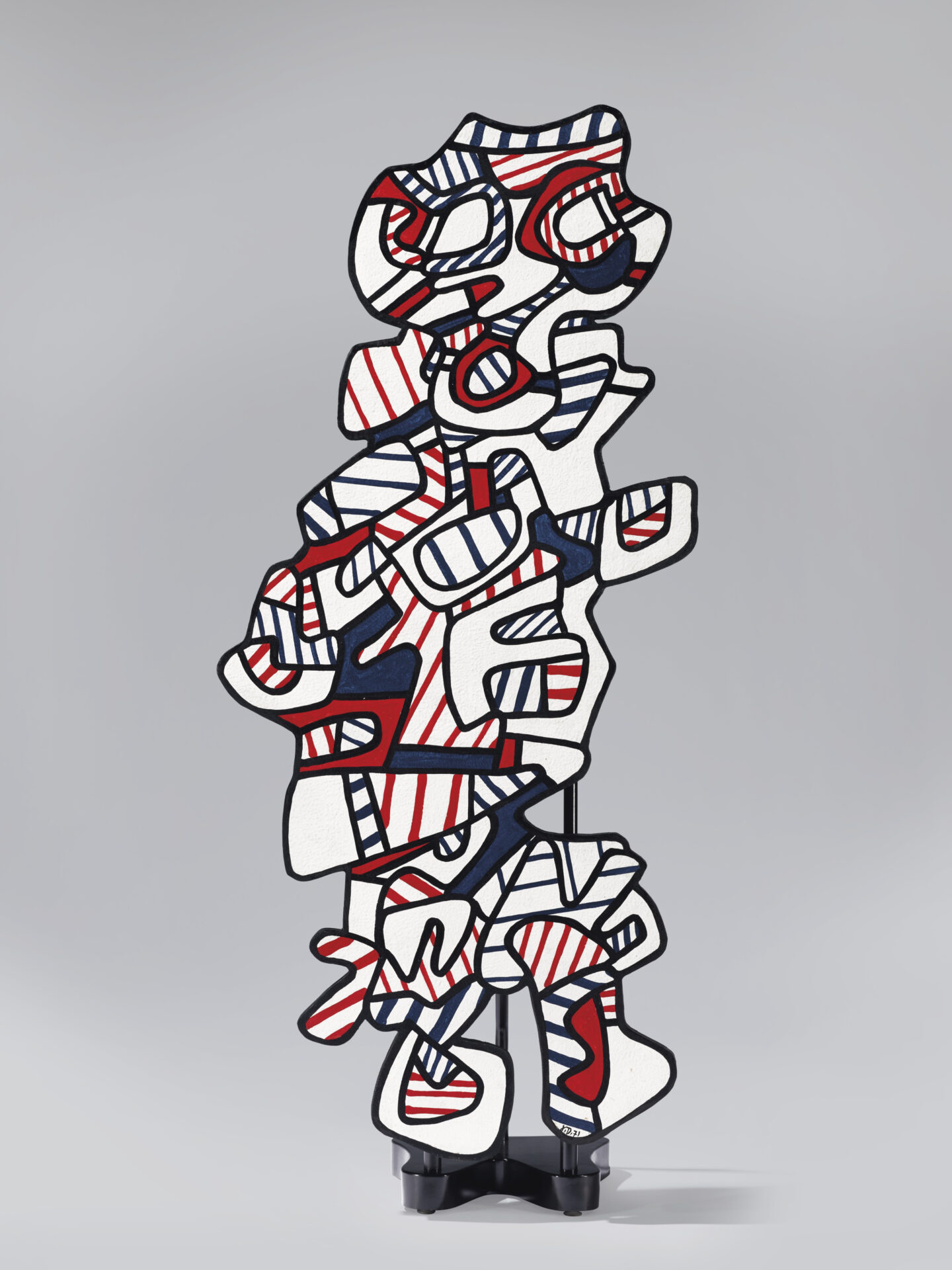Dubuffet was able to appreciate the artistic value of works produced by groups as diverse as children, prison inmates and the mentally ill. He collected these works as a source of inspiration for his own art, as he considered them to be the most genuine artistic expression. These works were grouped together under the heading of “Art Brut”.
He began making art seriously at the age of 41, after a successful career as a wine merchant, his family’s business. In the 1940s, his painting tended towards figurative art with views of cities and landscapes. These works were created with vibrant colours and flat surfaces devoid of perspective. In the following decade, during which he spent a year in New York, his work turned towards the abstract and he made further use of new materials such as cement, aluminium foil, tar and gravel. These works blurred the boundaries between painting and sculpture.
In the 1960s, he had important exhibitions in museums including the MOMA and the Guggenheim in New York, the Art Institute in Chicago, the Musée des Arts Décoratifs in Paris and the Tate in London. This is when he began his period of work known as “Hourloupe”, which included paintings as well as drawings, sculptures and architectural installations. As the artist himself explains, “the Hourloupe cycle began with drawings and paintings. After that I felt the need to associate reliefs with these paintings to give them more life and the result is painted and sculpted panels such as the Cabinet Logologique. Then I began to want, still in my thoughts, to increase the presence and action of these paintings, to abandon the flat panels and use materials freely open in space, sculpted on all their faces, which is different again. Then I was driven by the desire to not only tackle these paintings while keeping my feet on the shore of everyday life, but to leave this shore, to enter the images, to live in them. The result is a kind of allusive and figurative architecture, totally imaginary architecture and unreal architecture, instead they are images made in a habitat ”1.
Some of his best-known monumental sculptures belong to this cycle, such as “Group of Four Trees”, commissioned by David Rockefeller for the Chase Manhattan Plaza in New York, or “Jardin d’émail” designed for the Kröller-Müller Museum in Holland. These works are made in white with organic shapes drawn in black lines.
The Hortensia Herrero collection includes two sculptures, “Personnage aux bajoues” (1967) and “Milord” (1971), belonging to this “Hourlope” series, which has been the longest and most fruitful cycle in the artist’s career.
